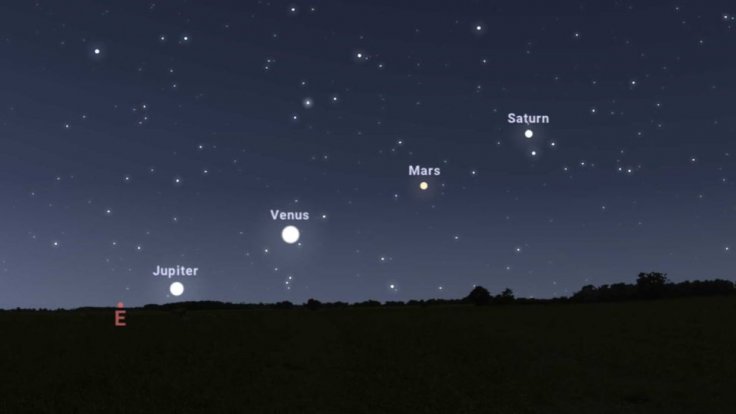NASA has revealed that four planets will line up in a pre-dawn sky in the coming days this month, making an extremely rare celestial spectacle. Saturn, Mars, Venus and Jupiter will appear diagonally on April 17, when Jupiter will be nearest the horizon and Saturn the highest.
The planetary alignment of the four planets will start from April 17 and it will be clearly visible on April 20. Moon will also be joining the alignment on April 23 and on April 29 Moon will be too close to the sun.

Planets to Be Identified By Steady Shine
The last time the four planets were lined up in similar ways was in 2020, 2016, and 2005.
The planets in the sky will be identified by the lack of twinkling as planets shine steadily while stars twinkle.
NASA has revealed that on April 20 alignment will be the most visible in the southeast in the northern hemisphere while Jupiter could be obscured due to the sunlight until the last week of the month.
The last time Saturn, Jupiter, Mars, and Venus lined up like this was back in 2020, and, before that, in 2016 and 2005.
Most Spectacular Alignment
The planetary lineup comes before the upcoming stunning alignment in a couple of months, which is termed the most spectacular alignment of the year.
Seven planets are going to align in the same region during a pre-dawn sky in June. Mercury, Venus, Mars, Jupiter, Saturn, Uranus and Neptune will line up on June 24.
During the planetary alignment, Mercury, Venus, Mars, Jupiter and Saturn could be seen with naked eyes while a telescope could be needed to discern Neptune and Uranus.
Meanwhile, NASA also revealed that Venus and Jupiter, the two brightest planets in the sky, are set for their own ultra-close conjunction at the end of the month on April 30.
It will be similar to the meetup of Mars and Saturn that happened earlier this month on April 4, where they appeared 'a couple of finger widths apart, according to the Daily Mail.








